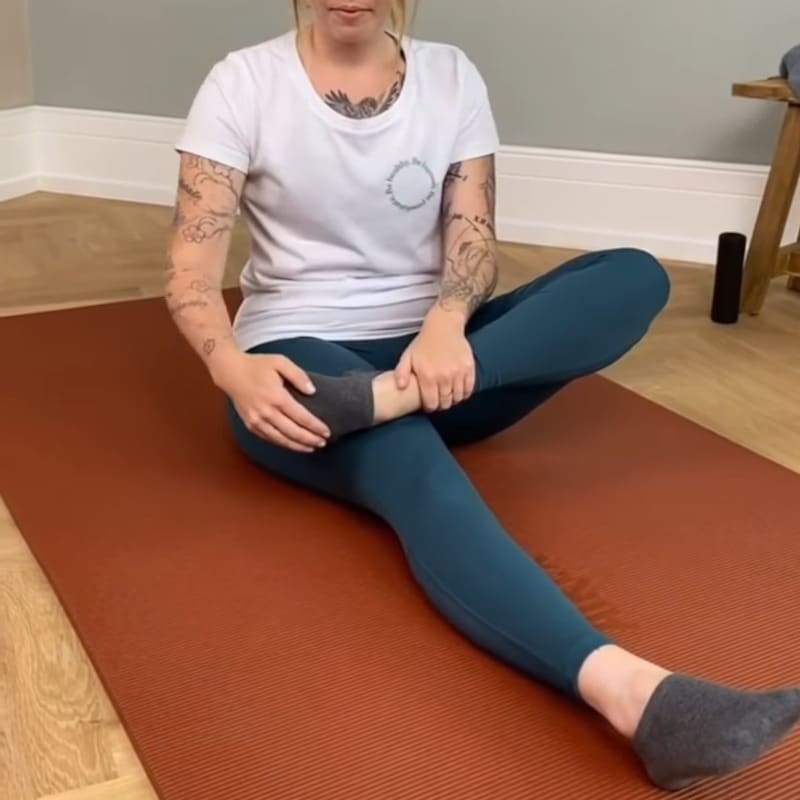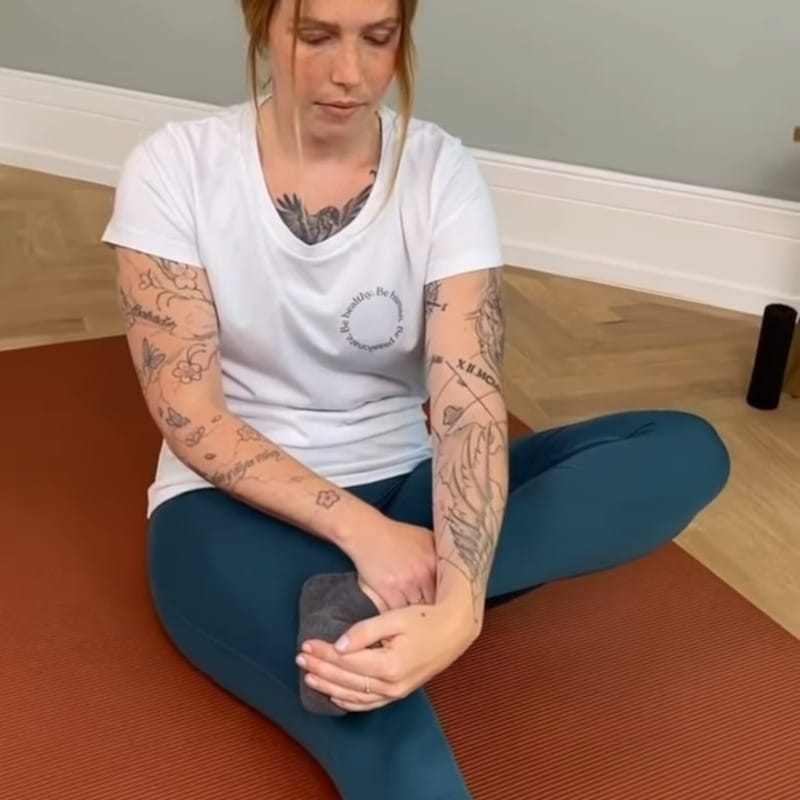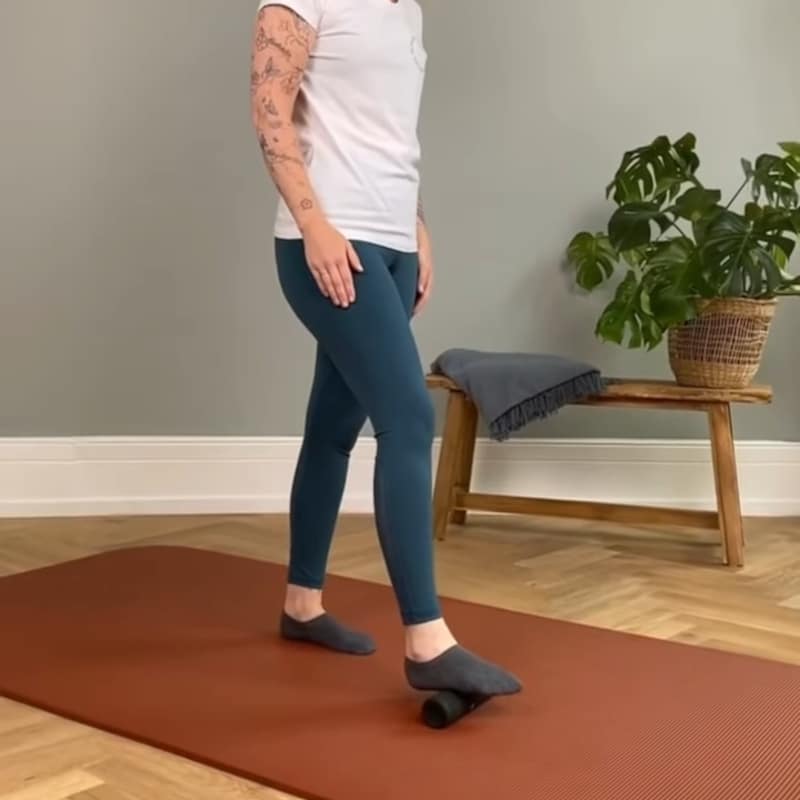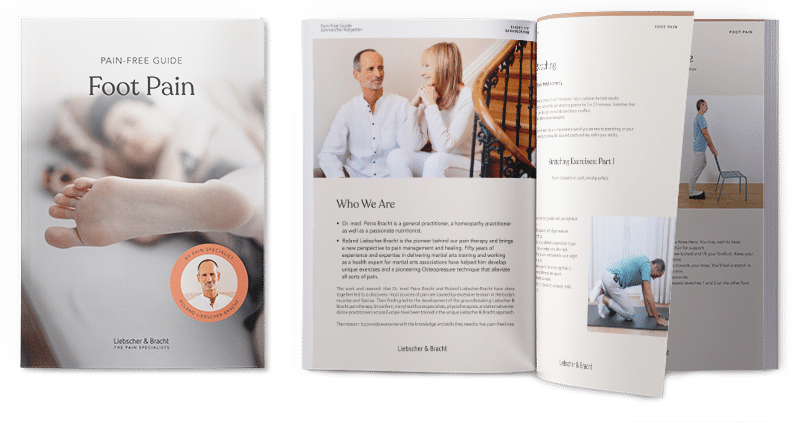Treatment for foot tendonitis
Body Part:
Foot
Equipment:
Mini Foam Roller
Level:
Beginner
Body Part:
Foot
Equipment:
Mini Foam Roller
Level:
Beginner
If you have foot tendonitis, one or more of your foot tendons has become inflamed. Although moving your foot hurts, the right kind of activity can help your injured tendon. Studies have shown that complete immobilization can have negative consequences.1) We’ve developed a 6-minute routine to ease the swelling and stiffness in your foot. All you need is our Mini Foam Roller. If you don’t have our tool, try using a rolling pin. If you want to start exercising, jump to our video and follow along. Keep reading to learn more about foot tendonitis and foot tendons.
Our feet are made up of 26 bones, 33 joints, and over 100 tendons. Tendons are soft connective tissue consisting primarily of water and collagen that allow our joints to move.2) Besides helping with movement, our foot tendons keep us balanced. Foot tendonitis occurs if any of these tendons become irritated or inflamed.
Foot tendonitis is an overuse injury—the condition results from performing the same movements over and over or overstretching the tendon. Foot tendonitis is common among ballet dancers, athletes, and people who exercise regularly, especially if the sport or exercise requires running or jumping. Foot tendonitis may develop from a foot or ankle injury.
Peroneal tendonitis. The peroneal tendons are located behind the outer ankle bone. Each foot has two peroneal tendons which run side by side. One is attached to the outside edge of the midfoot, the other near the inner area of the foot arch. The peroneal tendons stabilize our feet, help them make an outward motion, and protect against sprains. Peroneal tendonitis causes ankle pain.
Extensor tendonitis. The extensor tendons run along the tops of our feet, connecting the front leg bones to our toes. The extensors help us flex our toes and lift them off the ground. Extensor tendonitis causes pain on the top of the foot.
Posterior tibial tendonitis (posterior tibial tendon dysfunction). The posterior tibial tendon attaches the calf muscles to the foot bones. The posterior tibials support the inside arches of our feet. Posterior tendonitis causes pain on the inside of the foot and ankle.
Achilles tendonitis. The Achilles tendon connects the calf muscles to the heel bone. The Achilles pulls our heels off of the ground so we can stand on our toes. Achilles tendonitis is often caused by excessive sport, exercise, or training on an inappropriate surface.3) You may develop tendonitis in your Achilles if you have tight calves or have begun wearing a pair of new shoes. Achilles tendonitis causes pain at the back of the leg or above the heel.
Visit our online shop to get your Mini Foam Roller. We’ve got lots of pain-relieving tools and products waiting to be added to your cart.
Take me to the shop.


For this exercise, you’ll need our Mini Foam Roller.
Perform our treatment for foot tendon pain 6 days a week and leave 1 day for rest. When the pain and swelling in your foot become less intense, you can adjust your exercise frequency.
Give your foot time to heal. Take a break from whatever activity brought on your foot tendonitis.
Download our FREE PDF guide and start relieving your foot pain now.

All gain. No pain.
Discover how to identify which foot condition you have, learn all about causes and symptoms, and find out which of our exercise routines is best to manage your foot pain.
Learn About & Manage Foot PainWhether you have Achilles tendonitis, a tendon injury, or are experiencing general pain, our stretches can help alleviate, rehabilitate, and get you back in fighting form.
Relieve Achilles Tendon Pain NowIf our calf muscles are tight, it can interfere with our ability to move freely and easily. Loosen your lower limb muscles with this targeted 8-minute stretching routine.
Crush Calf Pain Now